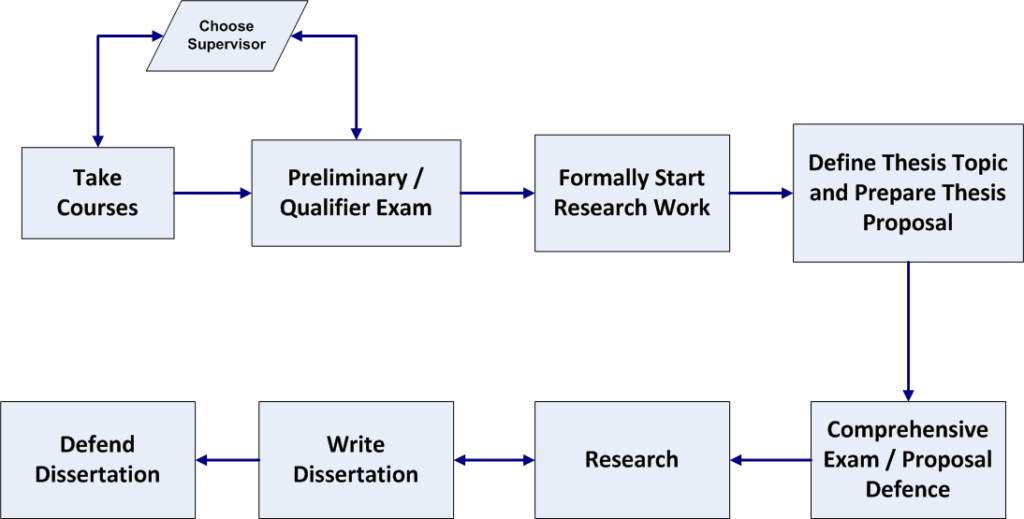how to apply for ph.d.
Pursuing a Ph.D. is a major decision, and the application process may seem lengthy. Hence, here is a compiled straightforward, step-by-step guide on how to apply for a Ph.D. program and assist you in sorting through the abundance of material available. If you are considering pursuing a Ph.D., you might also be interested in seeking guidance from a Research Coach or utilizing a Research Consulting Service.

1. Find Research Topics You like:
Choosing the field of study you are interested in is the first step to applying for a Ph.D. program. To do this, consider all the subjects, classes, assignments, publications, and experiences or reoccurring questions that have piqued your interest throughout the last year. Since you will be working on your research for the next three years and more, this is the most crucial item to consider in getting admission to Ph.D. schools. Do not rush it.
2. Selecting the Kind of Ph.D. You want:
When deciding whether to apply for Ph.D., you should know that there are two primary kinds of Ph.D.s: self-proposed research and pre designed programs.
Many students across all disciplines decide to create and present their Ph.D. research project, as this choice gives students far more control over their work. Not every self-proposed research, nevertheless, receives funding. Students might need to seek minor grants or part-time jobs throughout their education. You will also need to devote extra time to your application since you have to develop a feasible Ph.D. project.
On the other hand, in Predesigned programs, these projects are already available when applying for a Ph.D. There are three varieties of these projects:
Centre for Doctoral Training (CDT): These courses concentrate on certain fields of study and may entail working with business associates.
Doctoral Training Partnerships (DTPs) provide possibilities for multidisciplinary research and training.
iCASE: With internships included, these projects offer the greatest industry experience.
Pre-designed projects often have complete financing for four years, so you do not have to worry about funding. The major con of a predesigned program is that competition can be fierce as multiple students apply for the same advertised Ph.D. opportunity.
3. Finding yourself a supervisor:
You must find a possible supervisor if you propose your research topic, which is typically the case with a self-funded postgraduate study.
Examining the staff biographies on the department website, the subjects they have published in the last two years, and the research projects of the students they have guided in the past is the best approach to identifying a qualified Ph.D. supervisor.
Most Ph.D. supervisors will prefer that you apply informally by emailing them your CV before you formally apply for a sponsored Ph.D.
Before you begin the official application process, this will help them better understand why you are applying and what areas of your academic background you are strong in.
4. Creating a proposal for research
After your research period is over, you must write a research proposal while keeping in mind the students in both scenarios, i.e., the predesigned and self-proposed projects.
While this is not the final version you will submit, creating a research proposal can be helpful in some circumstances.
I will talk more about research proposal writing in the upcoming blog post. (Also, check out my book, ‘A Guide to a Topic Selection Journey for First-time Researchers: ZEROING IN ON A RESEARCH TOPIC
5. Checking entry requirements, fees, and funding options:
Before beginning your Ph.D. most universities will need overseas students from non-native English-speaking countries to either achieve their English language requirements or finish an English course with them. The TOEFL and IELTS are the two exams used to assess students’ English language proficiency.
Once you have determined which Ph.D. programs interest you and have verified your eligibility, you must investigate your financing possibilities. These consist of everything from complete studentships to fee reductions. Independent groups may provide full or partial financing to Ph.D. students whose research interests them.
After preparing, gathering, and organizing all required materials (research proposal, CV, personal statement, etc.), submit your application using the university’s application site. Pat yourself on the back as we come to an exciting conclusion on how to get admission to a Ph.D. program.
Along with learning more about how to apply for Ph.D., you have also learned how to identify the right supervisors and get the money you require. Recall that applying for a Ph.D. is a big step, so plan and take your time.
Continue to shine brightly, and start your amazing adventure towards a Ph.D.!
If you need any help or guidance for applying for a Ph.D. or just need some tips, you can book a 30-minute session with me. I offer the first session FREE. CLICK HERE to schedule your call.
FAQ
Q. HOW TO APPLY FOR PH.D. IN INDIA?
To apply for a Ph.D. in India, choose a university, check eligibility criteria, clear entrance exams like NET or university-specific tests, submit required documents, and attend interviews.
Q. HOW TO APPLY FOR PH.D. IN ABROAD?
To apply for a Ph.D. abroad, research programs, prepare your CV and research proposal, get recommendation letters, take required tests (e.g., GRE, TOEFL), and submit your application through the university’s online portal.







